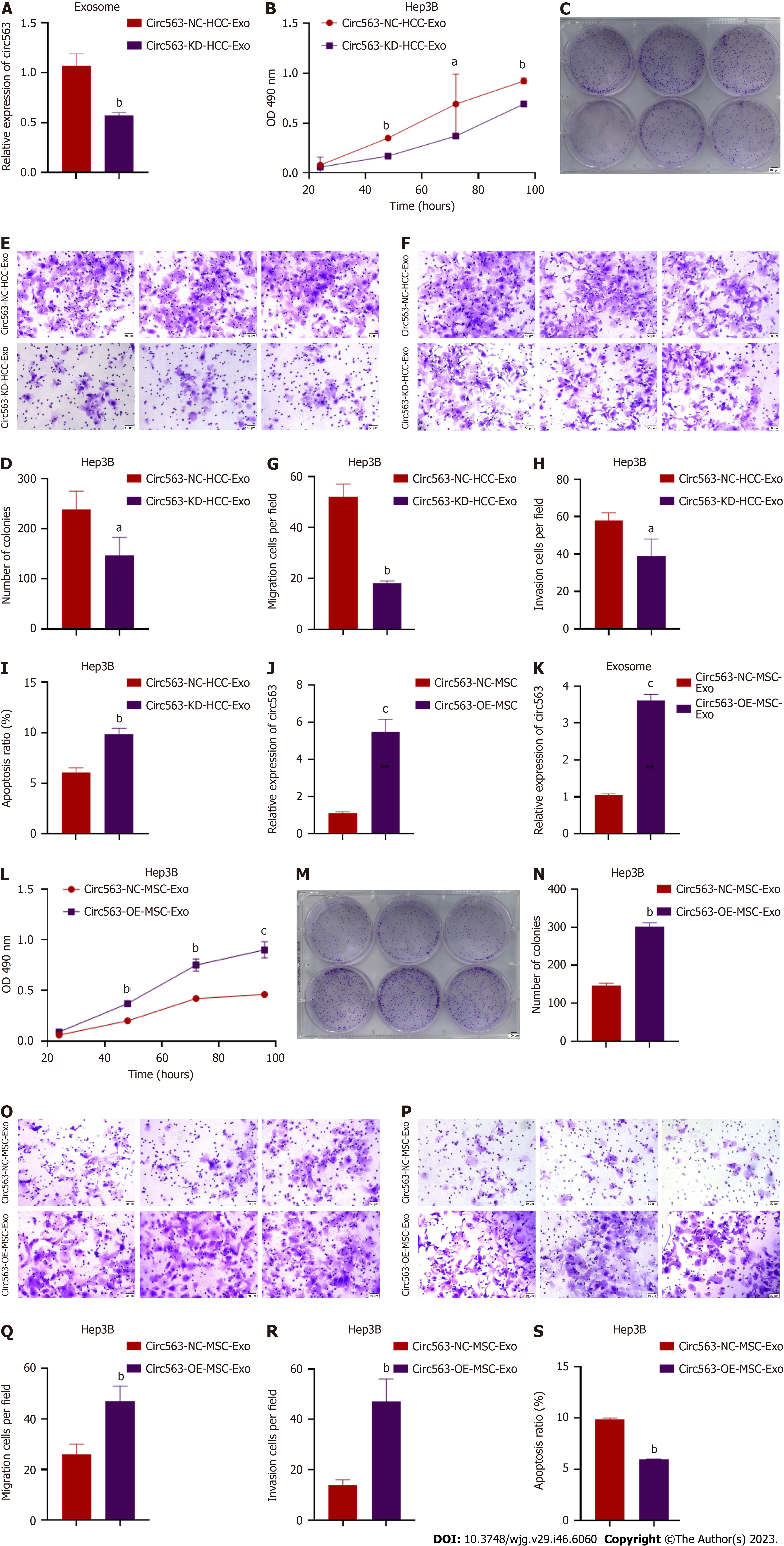Copyright
©The Author(s) 2023.
World J Gastroenterol. Dec 14, 2023; 29(46): 6060-6075
Published online Dec 14, 2023. doi: 10.3748/wjg.v29.i46.6060
Published online Dec 14, 2023. doi: 10.3748/wjg.v29.i46.6060
Figure 4 Exosomal circ563 facilitating hepatocellular carcinoma progression.
A: First, a knockdown experiment was conducted in Hep3B cells, and the circ563 levels in Hep3B-derived exosomes were quantified by polymerase chain reaction. Hep3B cell function was assessed after co-treatment with exosomes isolated from the culture medium of circ563-knockdown Hep3B cells; B-D: Downregulation of exosomal circ563 (exo-circ563) reduced Hep3B cell proliferation and the number of colonies formed; E-H: Decreased exo-circ563 levels suppressed the migratory activity and invasiveness of the Hep3B cells; I: The downregulation of exo-circ563 was correlated with apoptosis induction; J: The efficiency of circ563 overexpression in the mesenchymal stem cells (MSCs) was determined by quantitative real-time polymerase chain reaction; K: The upregulation of circ563 in MSC-derived exosomes was confirmed; L-R: The hepatocellular carcinoma (HCC) cell proliferation, metastasis, and apoptosis rates were assessed following exosome treatment. Exo-circ563 significantly induced HCC cell proliferation, migration, and invasion; S: Flow cytometry analysis showed that the percentage of apoptotic cells was significantly decreased. aP < 0.05, bP < 0.01, cP < 0.001. exo-circ563: Exosomal circ563; HCC: Hepatocellular carcinoma; MSC: Mesenchymal stem cell; Exo: Exosome.
- Citation: Lyu ZZ, Li M, Yang MY, Han MH, Yang Z. Exosome-mediated transfer of circRNA563 promoting hepatocellular carcinoma by targeting the microRNA148a-3p/metal-regulatory transcription factor-1 pathway. World J Gastroenterol 2023; 29(46): 6060-6075
- URL: https://www.wjgnet.com/1007-9327/full/v29/i46/6060.htm
- DOI: https://dx.doi.org/10.3748/wjg.v29.i46.6060









